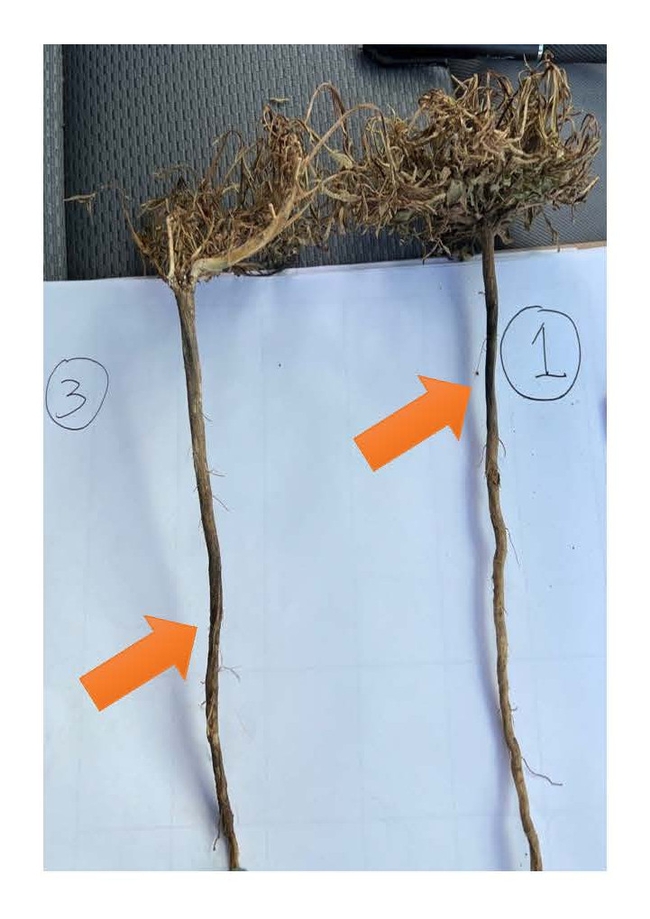Tong Zhen is a Ph.D. student in the Hanson Lab at UC Davis.
Non-chemical weed control usually is based on physical methods (e.g. tillage or mowing) or thermal methods such as propane flaming or steam. Electric Weed Control (EWC) is another thermal method that passes electrical current through target plants and the heat generated by electrical resistance damages plant cells. With funding from the Organic Agriculture Research and Extension Initiative (OREI), we recently initiated new research with collaborators at Oregon State University and Cornell University to evaluate an electrical weed control device in orchard and berry crops.
The EWC machine we are using was manufactured by Zasso, a Brazilian company. The EWC machine has several parts shown in Figure 1. The tractor engine locally generates the electric power, and the transformer at the back of the tractor will generate the high-frequency electric current. Our machine is configured to treat one-side of the tree row (Figure 1B). The applicator unit has two electrodes, one at the front that is positively charged and applies current to the plants and another towards the rear of the unit that touches the ground and completes the electrical circuit as the electricity exits the plant roots into the soil.
After we assembled the EWC machine, we tested the machine in some weedy spots at the UC Davis Plant Sciences Field Facility on April 26, 2022. In each location, we tested different combinations of ground speed and transformer power setting.
We conducted the first test at a fallow field with horseweed (Erigeron canadensis) and common lambsquarters (Chenopodium album). The sizes of the weeds range from 2 to 20 inches tall. The horseweed started wilting 2 hours after the treatment, and the plants began to dry out in the following week. Figure 2A shows an obvious brown strip of dried plants 3 DAT and from Figure 2B and 2C, the treatment can injure larger plants as well.
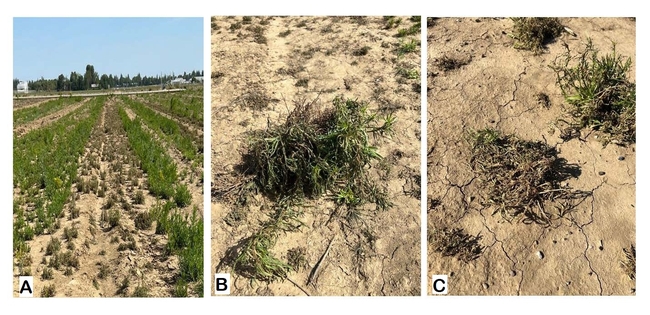
Other thermal weed control methods can only damage the aboveground tissues; EWC, on the other hand, is reported to have some impacts on belowground tissues as electrical current passes into some portion of the roots before dissipating into the surrounding soil. In Figure 3, we can visually observe damage to horseweed taproots a few inches below the soil surface.
The second location (Figure 4) is a fallowed vegetable crop field. Although this machine is setup to run in the orchard, but it also fits in a 60-inch bed and treat the adjacent bed top. The major weeds were prostrate pigweed (Amaranthus blitoides) and field bindweed (Convolvulus arvensis).
In this field, we observed really good weed control efficacy in the first week, but several individuals of field bindweed regrew and a few new pigweed seedlings emerged by 7 DAT.
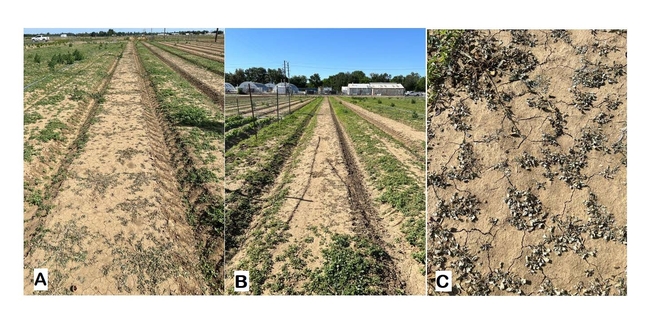
The third location was a fallow field with mature (beginning to flower) hairy fleabane (Erigeron bonariensis). We tested the combination of different voltages and driving speed again in this field and yielded a similar result we had in the first location. The treatment was effective on small plants while some of the larger individuals were severely injured but started regrowing after 7 DAT (Figure 5). According to Zasso, mature and taller weeds may require repeated treatments for full control.
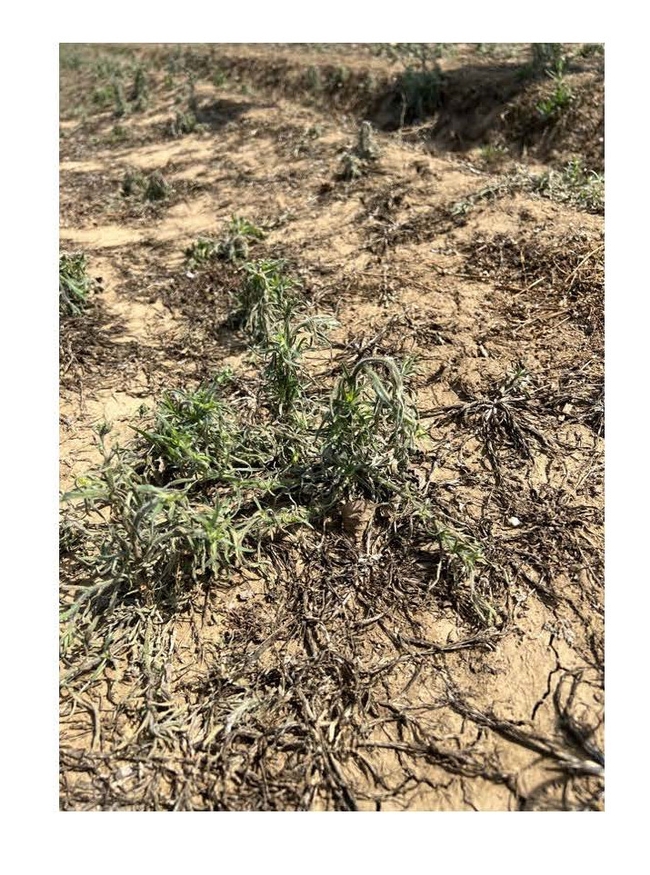
The fourth location (Figure 6) was an almond orchard with a heavy population of California burclover (Medicago polymorpha). The overall control of burclover was good with EWC at this site; however, treatment effects were difficult to separate from natural senescence of the burclover since it was late April. This orchard was irrigated with micro-sprinklers and there was no damage to the plastic irrigation tubing even when directly contacted by the applicator. However, in this heavily vegetated site that had been previously mowed, there was some risk of igniting dry vegetation with electrical arcing from the applicator to the soil surface.
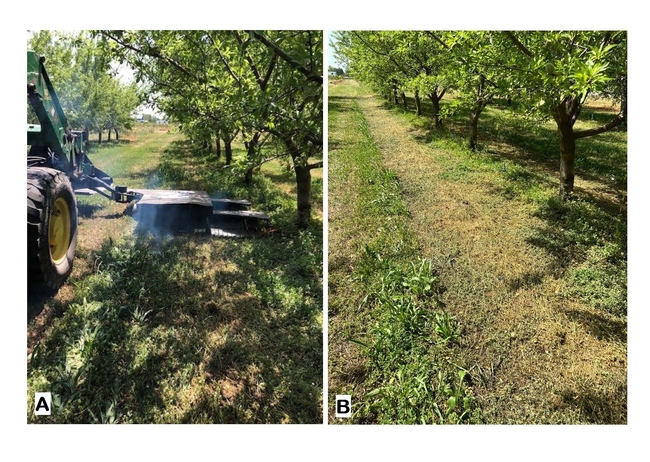
Weed control was quite effective on most species in these demonstrations, especially young annual plants. Initial damage to field bindweed was rapid and severe, but many of these plants were showing regrowth after 7 days. Some of the larger and more mature hairy fleabane and horseweed plants were not completely controlled with a single application of EWC at this stage. The most sensitive plants had an impressive level of injury and desiccation within a few hours of treatment while some of the larger plants took several days to show maximum levels of injury.
Our first impressions of the Zasso electrical weed control machine were fairly promising and we are excited about conducting more thorough evaluation of this non-chemical weed control approach in California perennial crops. Over the next few years, we will conduct several experiments to address several research questions:
- how does voltage level and ground speed affect EWC efficacy?
- how different soil types and soil moisture levels can affect EWC efficacy?
- how do different weed species respond to EWC at different growth stages?
- how economical are EWC approaches compared to other organic weed control methods?
If you want to see the machine working, you can check out the link for a short video: https://youtu.be/ef__tbkZvA4.

